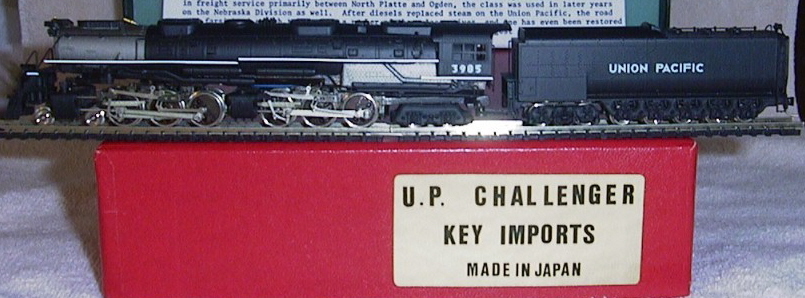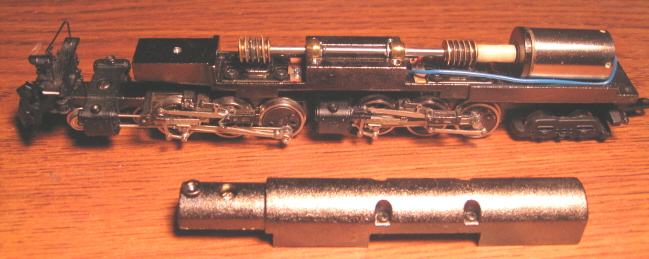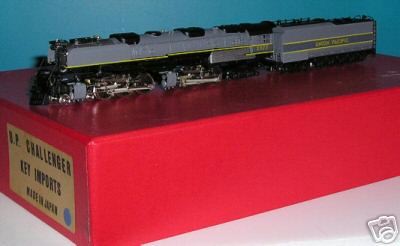

Introduced: 1985
This gorgeous looking Challenger model is very much similar to the Nakamura 4-8-8-2 Cab Forward released by Key the previous year (1984). In fact, mechnically they are virtually identical. Not surprisingly, performance is similarly impressive.

The chassis is all metal and quite hefty. A large metal weight is screwed to the top of the chassis and, once removed, reveals the metal driveshaft and dual brass worm gears underneath. The motor is a closed-sided coreless "can" (Namiki/Japan). Right-rail pickup is provided by the two right-side pilot wheels and the three right-side drivers. Similarly, left-rail pickup is provided by the two left-side trailing truck wheels and the three left-side drivers. The tender is electrically neutral. Current flows from the wheels into the metal engine assembles, and is in turn routed to the motor by a couple of wires. The worm gears turn idler gears inside the engine towers, which in turn drive two axles per engine (the remaining drivers being turned by the cranks). All gearing is metal. Although a headlight housing is built into the pilot assembly, there is no actual bulb. The tender has a back-up light housing built into as well, however it too is non-functional. A metal coupler pocket is screwed to the tender (and a Rapido-style coupler is included in the package of spare parts). There is no provision for a coupler on the pilot. Wheels are low-profile, so no problems on Code-55 rails. There are no traction tires. The shell includes cab interior detail (no window glazing, though). Brakeshoes are included in the box (to be installed by the modeler).
As alluded to above, performance is excellent. Overall, it runs super smooth and super quiet (no wobbling, shaking, shimmying, grinding, buzzing or any of that other nonsense). Throttle response is smooth at all levels. Pickup is bulletproof (even through turnouts). Slow-speed creep is superb, the top-end speed is very reasonable and pulling power is strong. No problems on narrow (9.75" radius) curves or grades. All in all, a terrific steamer that runs every bit as good as it looks.

To remove the locomotive shell, first unscrew the two screws on the bottom of the chassis (underneath the cab). Next, unscrew the screw inside the smokestack. Lastly, unscrew the two small screws that hold the steam lines to the forward piston housings. The shell should lift off readily at that point.
Grade: A